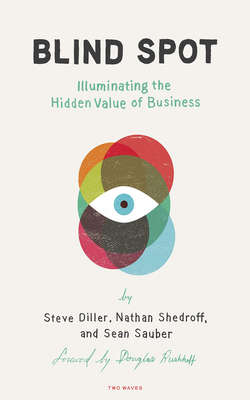Читать книгу Blind Spot - Nathan Shedroff - Страница 24
На сайте Литреса книга снята с продажи.
Co-Created
ОглавлениеIn a co-created interaction, you and the organization both bring something to the table. Wikipedia is a great example of this, where users actually create the content and Wikipedia serves as a facilitator. Reddit is another example: individuals post and edit content, whereas the site merely facilitates the interaction and selects the moderators. One of the easiest ways to create a valuable relationship is to allow people, where appropriate, to contribute to its creation. We simply care more about the things we invest our own time in.
You can also find an ambiguous middle ground between top-down and co-created. The Android operating system allows for a lot of customization. You can greatly affect how it interacts with you, but there are always rules and limits to what you can do. Some Levi’s stores have a machine that takes your measurements and then lets you specify how the pants flare out, their color, and so on. Still, it eventually makes a pair of pants, not a fruit salad. In this case, Levi’s is enabling customization but not full-on co-creation. It’s an invitation to customers to work within parameters but not one to do whatever they want (or to ask for things that aren’t possible).
For example, consider an unusual art gallery, the now-closed Feature Gallery in New York.
In an interview for this book, its late owner, Hudson (he went by one name), described how curators typically design visitor experiences. They usually organize galleries so that people see the least impressive work first and most expensive and famous at the end. In other words, they create a building narrative that rises to a climax.
You might wonder how this is possible if a museum has an open path that allows people to walk wherever they want (as opposed to some exhibits that have only one path through). After all, if visitors have choice and control, how can anyone shape those choices and paths? This is an important concept in building relationships with customers. Overall, people are remarkably predictable, and most will have the same experiences from your offerings. Most people who enter supermarkets shop for produce first. Most people who browse a website do so in similar patterns, so much so that companies have developed algorithms that can predict, with reasonable accuracy) what you will need or do next, whether or not you’re in a hurry, or when to offer customer service. There’s nothing wrong with this kind of responsiveness and customization. Indeed, if it weren’t the case, we would be much more frustrated, and companies would have to develop separate paths for each person in order to serve them comfortably. These typical responses to choices and stimuli are what allow all of us (museum curators and web designers, alike) to design satisfying experiences for more than one person (see the section on triggers in Chapter 7, “Discovering”).
In the case of art galleries, it turns out that almost all people turn right when they enter. Although some stray from the path, the vast majority will walk through a gallery in exactly the same pattern. That allows curators to draw them through an experience that unfolds much like a narrative, even though everyone officially has permission to go where they like. Typically, a museum or gallery uses this fact to build a predictable narrative based on a chronology of the artist’s works: early works in the front, later works at the end.
However, Hudson believed that this approach belonged in the past. Instead, each visitor should not only be able to improvise his or her experience, but also be encouraged to do so. To make this a reality, he didn’t use the usual organizational principles in his gallery. Instead, he broke conventions, juxtaposed works in new ways, and organized the gallery space to lead the visitor in unusual directions. In this way, Feature disrupted everyone’s expectations and delivered fresh experiences that forced them to concentrate much more on the work than they would have done otherwise. The organization of an experience changes how easily different stories can be told or discovered. If you want to tell a unique story about yourselves, your organization, or its offerings, you can’t expect to do so in the same format that everyone uses.
And lest you think this led to its downfall, it didn’t. Feature was an iconic gallery that introduced many famous artists to the world. It closed simply because Hudson died, and it was too difficult for others to replicate his vision and process.
